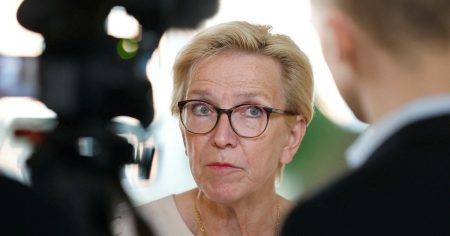The Left Party (Vänsterpartiet) in Sweden has declared its ambition to join a governing coalition following the next general election in 2026. However, recent internal turmoil within the party has sown seeds of doubt among its potential coalition partners, particularly within the Social Democratic Party (Socialdemokraterna), raising questions about the viability of a left-leaning coalition government. The Left Party’s recent internal struggles, marked by public disagreements and high-profile resignations, have created an atmosphere of instability, prompting concerns among other opposition parties regarding the party’s reliability and capacity to effectively contribute to a stable and functioning government. This skepticism is particularly prevalent within the Social Democrats, the largest party on the left of the political spectrum, and a necessary partner for the Left Party’s governmental ambitions.
The Social Democrats, having witnessed the internal conflicts within the Left Party, have expressed reservations about including them in a future government. Jimmy Jansson, a prominent Social Democrat and municipal commissioner in Eskilstuna, articulated this concern, highlighting the ”fuss, noise, and strife” associated with the Left Party. This sentiment reflects a broader unease within the Social Democratic ranks about the potential disruptions and difficulties that incorporating the Left Party into a governing coalition might entail. The Left Party’s internal divisions not only raise concerns about their ability to present a unified front on policy issues but also cast a shadow over their capacity to maintain a consistent and constructive approach to the challenges of governing. This perception of instability is a significant obstacle for the Left Party’s aspirations to participate in a future government.
The Social Democrats’ hesitation stems not only from the Left Party’s recent internal struggles but also from deeper, longstanding differences in political ideologies and strategic approaches. Historically, the two parties have diverged on key policy areas such as economic policy, defense spending, and the EU. These differences, coupled with the Left Party’s perceived tendency towards more radical and uncompromising positions, have often made cooperation challenging. The recent internal conflicts within the Left Party have exacerbated these existing tensions, further complicating the prospects of a smooth and productive working relationship within a coalition government. The Social Democrats are wary of being tied to a party perceived as unstable and potentially disruptive, especially as they seek to regain public trust and present a cohesive alternative to the current government.
The Left Party’s path to government participation is thus fraught with challenges. To overcome the skepticism of potential coalition partners, the party needs to address its internal issues and project an image of stability and unity. This requires not only resolving the immediate conflicts but also demonstrating a capacity for constructive dialogue and compromise, particularly with the Social Democrats. The party needs to convince potential partners that it can be a reliable and responsible participant in government, capable of contributing to effective policymaking and maintaining a stable political environment. Failing to do so will likely marginalize the party and diminish its chances of achieving its governmental ambitions.
Beyond addressing internal divisions, the Left Party also needs to navigate the complex landscape of Swedish politics and forge a clear and compelling political narrative that resonates with voters. The party must articulate a vision for the future that distinguishes it from other parties on the left while also demonstrating a willingness to collaborate and compromise. This requires a delicate balancing act, appealing to its core base while also broadening its appeal to a wider electorate. The challenge lies in convincing voters, and particularly those leaning towards the Social Democrats, that the Left Party offers a unique and valuable contribution to a potential left-leaning government, justifying the perceived risks associated with their inclusion.
The Left Party’s success in achieving its goal of government participation ultimately hinges on its ability to rebuild trust with potential partners and present itself as a stable and reliable political force. This requires addressing internal divisions, clarifying its political platform, and demonstrating a commitment to constructive engagement with other parties. The party’s future, and its potential role in shaping Swedish politics, depends on its capacity to overcome these challenges and convince both potential partners and the electorate that it is ready to take on the responsibilities of government. The road ahead is undoubtedly challenging, but the party’s ambition to play a more significant role in Swedish politics remains a driving force.














